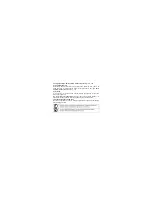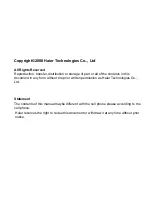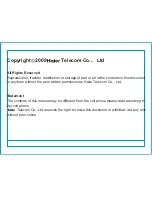
TG-7 Cellular Series Installation & Operating Guide
2
56053501 Rev A © 2022 Telguard
The UL Listed equipment at the TCC plays a key role in the operation of every Telguard device. All
Telguard units utilize the TCC due to the panel alarm signal format encoding and decoding
requirements used in packet-data transmissions over the digital cellular network. The TCC also
manages the real-time databases for Telguard accounts and a complete history of every Telguard
transmission information, supervisory trouble information, Check Status information, and automatic
self-test information.
TG-7 Cellular Series communicators come in several versions configured to meet the needs of various
applications, to work either with the AT&T or Verizon networks, and to adhere to the UL and ULC
requirements for burglary or fire systems:
Model
Version
Application
UL/ULC Standards
TG-7
TG-7-A
(AT&T)
Communication for Commercial Burglary
Systems in United States and Canada
UL 1610, ULC-S304
TG-7-V
(Verizon)
Communication for Commercial Burglary
Systems in United States
UL 1610
TG-7A
TG-7A-A
(AT&T)
Communication for Retail and Financial
Commercial Burglary Systems in United States
and Canada
UL 1610, ULC-S304
TG-7A-V
(Verizon)
Communication for Retail and Financial
Commercial Burglary Systems in United States
UL 1610
TG-7FS
TG-7FS-A
(AT&T)
Communication for Commercial Burglary and
Commercial Fire Systems in United States and
Canada
UL 1610, ULC-S304,
UL 864, ULC-S559
TG-7FS-V
(Verizon)
Communication for Commercial Burglary and
Commercial Fire Systems in United States
UL 1610, UL 864
TG-7UB
TG-7UB-A
(AT&T)
TG-7 Cellular Series Upgrade Board for Legacy
TG-7 Cellular Series Communicators for
Commercial Burglary and Commercial Fire
Systems in United States and Canada
UL 1610, ULC-S304,
UL 864, ULC-S559
TG-7UB-V
(Verizon)
TG-7 Cellular Series Upgrade Board for Legacy
TG-7 Cellular Series Communicators for
Commercial Burglary and Commercial Fire
Systems in United States
UL 1610, UL 864
NOTE: TG-7 Cellular Series communicators can be used as either a Primary or Secondary Path
device when an alternate communications path is connected to another alarm panel DACT
connection. In such cases, the panel determines the alarm reporting path.
NOTE: While working in Canada, the communicator may use Rogers Wireless, Bell Mobility, Telus,
or SaskTel cellular networks.









































